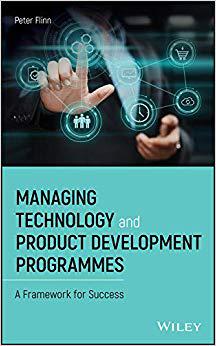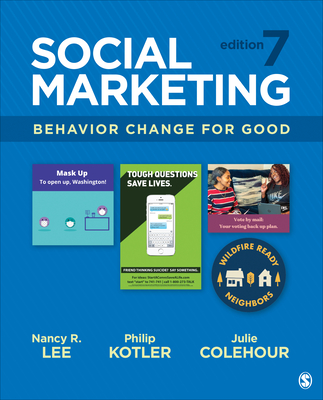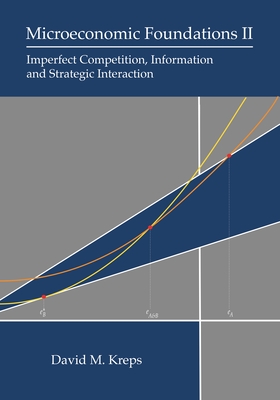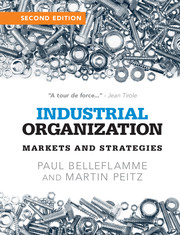图书简介
Engineering Product Development provides a framework for understanding how new technology is developed into reliable, off-the-shelf products which can then be sold successfully to private or business customers. Its emphasis is on engineered products, but the principles can be applied more widely. The book covers every aspect of new product development from economics to quality processes, prototype development to manufacturing, customer needs to value proposition.
1 Introduction 1 1.1 Why Write This Book? 1 1.2 Importance of the Product Development Process 3 1.3 Perspective of This Book 3 1.4 Intended Readership 4 1.5 Science, Technology, Innovation, Engineering, and Product Development 4 1.6 The Changing Nature of Engineering 5 1.7 The Fourth Industrial Revolution 7 1.8 Scope of This Book 7 1.9 Structure of This Book 8 1.10 Reading Sequence 10 References 10 2 Engineering as a Process 13 2.1 Background 13 2.2 The Basic Components of the Process 13 2.3 Expenditure on Research and Development 15 2.4 Economic Returns from R&D Work 17 2.5 Science as the Precursor of Technology 18 2.6 Iteration as the Heart of the Process 19 2.7 Impact of Low-Cost Computing 20 2.8 A Nonlinear Process? 20 2.9 Multiple, Parallel Activities 21 2.10 Right First Time versus Iteration 22 2.11 Lean Thinking Approach 22 2.12 Cost of Problem Resolution 23 2.13 Risk versus Time 24 2.14 Creativity versus Risk Management 26 2.15 Early Detection of Problems 28 2.16 Management of Change 28 2.17 Management of Learning 29 2.18 Governance of the Process 30 2.19 Formal Quality Management Systems 30 2.20 Concluding Points 31 References 32 3 Evaluating the Maturity of Developing Technology 35 3.1 Background 35 3.2 Origins of Technology Readiness Measurement 36 3.3 Purpose of Technology Maturity Assessment 37 3.4 Users of Technology Maturity Assessment 37 3.5 What Is Technology Maturity? 38 3.6 Technology Readiness Level (TRL) Structure 38 3.7 Phases of Technology Readiness 40 3.8 The ’Valley of Death’ 42 3.9 Manufacturing Readiness Level (MRL) Structure 43 3.10 Progressing through the Scales - Some Practical Points 43 3.11 International Standards 48 3.12 Assessment of TRL and MRL Levels 49 3.13 Synchronising Technology and Manufacturing Maturity 52 3.14 Limitations of Technology Maturity Assessment 53 3.15 Concluding Points 54 References 54 4 Aligning Technology Development with Business and Manufacturing Strategy 57 4.1 Introduction 57 4.2 Business Context 57 4.3 Basis of Competition 59 4.4 The Value Proposition 60 4.5 Industry Structure 62 4.6 Routes to Commercialisation 63 4.7 Satisfying a Range of Customers 65 4.8 Linking to Manufacturing Strategy 66 4.9 Core Principles of Managing the Interface 66 4.10 Design for Manufacture Methodologies 67 4.11 Design for New Methods and Materials 69 4.12 Design for Connectivity - Internet of Things 70 4.13 Design for Environmental Considerations 70 4.14 Concluding Points 71 References 72 5 Planning and Managing the Work 73 5.1 Introduction 73 5.2 The Basics 74 5.3 Different Approaches 75 5.4 Different Forms of Project 75 5.5 The Project Mandate or Charter 76 5.6 Project Description 77 5.7 Timing Charts 78 5.8 Milestone Charts 80 5.9 Risk Management 82 5.10 Resource Planning 84 5.11 Project Contingency 86 5.12 Organising for Projects 87 5.13 Monitoring Small Projects or Subprojects 89 5.14 Approval and Formal Monitoring of Large Projects 90 5.15 Project Management versus Technology Maturity Assessment 93 5.16 Concluding Points 93 References 93 6 Developing the Concept 95 6.1 Introduction 95 6.2 Key Elements of the Process 96 6.3 Technology Roadmapping 98 6.4 Open Innovation 99 6.5 Concept Development 100 6.6 Industrial Design 102 6.7 Key Success Factors 102 6.8 Identifying and Meeting Customer Needs 103 6.9 Customer Data Gathering 104 6.10 Who Is the Customer? 106 6.11 Linking Detailed Design to Customer Needs 106 6.12 Ensuring a Robust Design - Taguchi Methods 109 6.13 Technology and Manufacturing Development at the Concept Stage 111 6.14 Economic Evaluation 112 6.15 Protecting Intellectual Property 112 6.16 Funding of Early-Stage Work 114 6.17 Concluding Points 114 References 114 7 Identifying and Managing Engineering Risks 117 7.1 Introduction 117 7.2 Identification of Risks 118 7.3 Risk-Based Approach 119 7.4 Sources of Engineering Risk 121 7.5 Qualitative Risk Assessment Methodologies 122 7.6 Fault Tree Analysis 124 7.7 Hazard and Operability Reviews - HAZOP 126 7.8 Quantitative Risk Assessment 128 7.9 Functional Safety 128 7.10 As Low as Reasonably Practicable 130 7.11 Safety Cases 132 7.12 Stretching the Boundaries 132 7.13 Concluding Points 134 References 135 8 Validation by Modelling and Physical Testing 137 8.1 Introduction 137 8.2 Purpose of Development and Validation Work 138 8.3 Methods 139 8.4 Validation and Test Programmes 139 8.5 Engineering Calculation 140 8.6 Modelling and Simulation 141 8.7 Physical Testing 143 8.8 Prototypes Not Possible? 146 8.9 Physical Test and Laboratory Support Facilities 147 8.10 Correlation of Modelling and Testing 148 8.11 Assessment of Serviceability 148 8.12 Software Development and Validation 149 8.13 Reliability Testing 150 8.14 Corrective Action Management 152 8.15 Financial Validation 153 8.16 Concluding Points 154 References 156 9 Engineering Delivery 157 9.1 Introduction 157 9.2 Forms of Information Output 158 9.3 Connected Products - Internet of Things 159 9.4 Detailed Design 159 9.5 Handling the Interfaces 161 9.6 Cost of Delayed Programmes 162 9.7 Planning and Decision-Making 162 9.8 Specialised Resources 164 9.9 Flow of Information 165 9.10 The Importance of Good Systems 166 9.11 The Role of Standards and Design Codes 166 9.12 Tracking Product Cost and Investment 167 9.13 Knowing When to Stop 168 9.14 Signing Off the Product 169 9.15 Examples of Good and Bad Practice 169 9.16 Concluding Points 171 References 172 10 Funding the Programme 173 10.1 Introduction 173 10.2 Internal Funding 174 10.3 Friends and Family Funding 175 10.4 Angel Investors 176 10.5 Venture Capital Funding 177 10.6 Private Equity Funding 177 10.7 Equity Crowd-Funding 178 10.8 Bank Lending 178 10.9 Peer-to-Peer (P2P) Lending 179 10.10 Public Funding of Early-Stage Work 179 10.11 Public Development Facilities 181 10.12 Business Plans 182 10.13 Concluding Points 182 References 183 11 Running Teams and Working with Partners 185 11.1 Introduction 185 11.2 Working Collaboratively 186 11.3 Team Composition 187 11.4 Team Development 188 11.5 Working with Partners 189 11.6 Working Internationally 191 11.7 Working Virtually 192 11.8 Leadership of Technology and Product Development Projects 193 11.9 Personality Traits 194 11.10 Selecting People 196 11.11 Developing People 198 11.12 Concluding Points 199 References 200 12 Decision-Making and Problem Solving 201 12.1 Introduction 201 12.2 Decisions to be Taken 202 12.3 Critical Thinking 202 12.4 System 1 and System 2 Thinking 203 12.5 Human Barriers to Decision-Making 204 12.6 East versus West 205 12.7 Statistical Thinking 207 12.8 Application to Management Processes 209 12.9 Problem Solving - A3 Method 210 12.10 Creative Problem Solving - TRIZ Method 214 12.11 Concluding Points 216 References 216 13 Improving Product Development Performance 219 13.1 Introduction 219 13.2 What Type of Organisation Are We Dealing With? 219 13.3 Structuring Improvement and Change Initiatives 220 13.4 Diagnosing the Current Situation - Generating Urgency 221 13.5 Organising a Way Forward -The Leadership Role 223 13.6 Developing the Strategy and Vision 223 13.7 Communicating the Vision 224 13.8 Empowering the Organisation 225 13.9 Generating Short-Term Wins 226 13.10 Longer-Term, Permanent Change 227 13.11 Achieving Permanence 228 13.12 Model of Good Practice - Toyota Product Development System 229 13.13 Models of Good Practice - Agile Software Development 230 13.14 Concluding Points 232 References 232 14 Summary, Concluding Points, and Recommendations 235 14.1 The Rationale for This Book 235 14.2 The Engineering Process 236 14.3 Technology Maturity 237 14.4 Aligning Technology with Business Needs 238 14.5 Planning the Work 239 14.6 Creating the Concept 240 14.7 Identifying and Managing Risks 241 14.8 Validation 242 14.9 Engineering Delivery 243 14.10 Funding the Programme 244 14.11 Running Teams and Working with Partners 245 14.12 Critical Thinking 246 14.13 Improving Product Development Performance 248 15 Future Direction 249 15.1 Introduction 249 15.2 Product Development Technologies 250 15.3 New Materials and Product Technologies 251 15.4 Energy, Environmental, and Materials Availability 251 15.5 Manufacturing Systems 252 15.6 Customer Demands 253 15.7 Connected Products 254 15.8 Concluding Points 254 References 255 Final Thoughts 257 Appendix A: TRL and MRL Definitions 259 A.1 Technology Readiness Levels 259 A.2 Manufacturing Readiness Levels 262 Appendix B: Toyota Product Development System 13 Principles and Their Cross-Referencing 265 Glossary of Terms 269 Index 275
Trade Policy 买家须知
- 关于产品:
- ● 正版保障:本网站隶属于中国国际图书贸易集团公司,确保所有图书都是100%正版。
- ● 环保纸张:进口图书大多使用的都是环保轻型张,颜色偏黄,重量比较轻。
- ● 毛边版:即书翻页的地方,故意做成了参差不齐的样子,一般为精装版,更具收藏价值。
关于退换货:- 由于预订产品的特殊性,采购订单正式发订后,买方不得无故取消全部或部分产品的订购。
- 由于进口图书的特殊性,发生以下情况的,请直接拒收货物,由快递返回:
- ● 外包装破损/发错货/少发货/图书外观破损/图书配件不全(例如:光盘等)
并请在工作日通过电话400-008-1110联系我们。
- 签收后,如发生以下情况,请在签收后的5个工作日内联系客服办理退换货:
- ● 缺页/错页/错印/脱线
关于发货时间:- 一般情况下:
- ●【现货】 下单后48小时内由北京(库房)发出快递。
- ●【预订】【预售】下单后国外发货,到货时间预计5-8周左右,店铺默认中通快递,如需顺丰快递邮费到付。
- ● 需要开具发票的客户,发货时间可能在上述基础上再延后1-2个工作日(紧急发票需求,请联系010-68433105/3213);
- ● 如遇其他特殊原因,对发货时间有影响的,我们会第一时间在网站公告,敬请留意。
关于到货时间:- 由于进口图书入境入库后,都是委托第三方快递发货,所以我们只能保证在规定时间内发出,但无法为您保证确切的到货时间。
- ● 主要城市一般2-4天
- ● 偏远地区一般4-7天
关于接听咨询电话的时间:- 010-68433105/3213正常接听咨询电话的时间为:周一至周五上午8:30~下午5:00,周六、日及法定节假日休息,将无法接听来电,敬请谅解。
- 其它时间您也可以通过邮件联系我们:customer@readgo.cn,工作日会优先处理。
关于快递:- ● 已付款订单:主要由中通、宅急送负责派送,订单进度查询请拨打010-68433105/3213。
本书暂无推荐
本书暂无推荐















